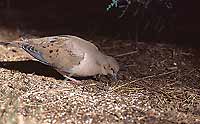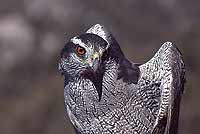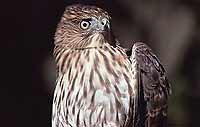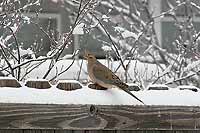 My apologies to Prince, but when doves call, they don’t “cry.” Their drawn-out call of soft whistled sounds resembles a mournful sound, but it really isn’t. It’s just the way they communicate, no emotion attached.
My apologies to Prince, but when doves call, they don’t “cry.” Their drawn-out call of soft whistled sounds resembles a mournful sound, but it really isn’t. It’s just the way they communicate, no emotion attached.
Mourning doves, the common dove in the Canyon Country, has a plumb body and long, pointed tail which is unique for North American doves. Their coloration is drab, brown to buffy-tan with dark spots on their wings. They’re built for blending into ground cover, not standing out in a semi-tropical forest like some of our warblers. Their heads look proportionately small for their bodies as do their bills. Drab to use, but suited for their open grassland habitats.
Like quail and grouse that also inhabit these open places, the doves rely on erupting from the ground or their perches to startle predators. Their flight is direct and fast, but sometimes not fast enough to evade a goshawk or Cooper’s hawk. They also fall to the bird hunter’s shotgun during hunting season, but still remain one of the most abundant and widespread game birds in North America.
Like other songbirds, mourning doves are migrants, some traveling long distances into Central America to winter. During the Moab Christmas Count, held every year around the holiday, their numbers decrease significantly in winter and are outnumbered by another dove, the Eurasian collared dove.
The collared doves aren’t native to Moab. They have expanded their range over the past 20 years or so. Native to Asia, the birds have expanded their territory first to the Bahamas, then across much of North America. First recorded in northern Utah in the late 1990s, these chunky relatives of the mourning dove are larger and have broad tails compared to the mourning dove’s more pointed tail. Though these doves are more “residential” than their wilder cousins, the collared dove is a new resident in Moab. Aptly named, the collared dove has a dark crescent around its neck.
See the two birds side-by-side and there is no mistaking the mourning dove. Named for their mournful song, their genus name, Zenaida, honors the Princess of Naples and wife of the zoologist Charles Lucien Bonaparte, a 19th century French biologist and ornithologist and nephew to Emperor Napoleon I. Though this royal lineage didn’t bode too well for Charles, but that’s another story.
 During the fall, mourning doves may be observed gathering in large flocks, feeding on waste grain and seeds and getting ready for migration. They may store these seeds in a “crop,” or enlargement of their throat, for latter consumption. One record shows over 17,000 bluegrass seeds stored in this muscular pouch-like expansion. Connected to the digestive system, the crop is a temporary storage area so the birds can digest their food later. This allows the birds to feed and flee, but to digest their spoils later on.
During the fall, mourning doves may be observed gathering in large flocks, feeding on waste grain and seeds and getting ready for migration. They may store these seeds in a “crop,” or enlargement of their throat, for latter consumption. One record shows over 17,000 bluegrass seeds stored in this muscular pouch-like expansion. Connected to the digestive system, the crop is a temporary storage area so the birds can digest their food later. This allows the birds to feed and flee, but to digest their spoils later on.
So as summer rolls into fall, expect to see these birds gathering in large flocks and preparing to head south for the winter. Of course, not all of them migrate, but if winter snows start to pile up, these birds have a hard time foraging. A little “dove and quail” mix spread atop a platform feeder will be a welcomed sight to these travelers, but don’t expect them to cry.